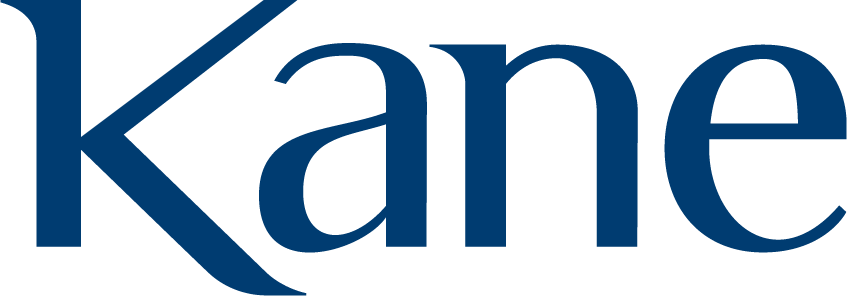How COVID-19 has changed the media landscape
When COVID-19 hit, most industries and organizations found themselves scrambling. There were so many unknowns and the world was forced to work and think differently.
Before the COVID-19 pandemic, reporters typically preferred to interview spokespeople live or via phone. And press conferences were most always in-person, with media in attendance asking questions and engaging in conversation before and after the event.
The rules and expectations of the workplace shifted, and all industries had to make it work. News stations and publications were not exempt from that shift, and we had to reimagine the way we communicate with reporters.
Here are four learnings as we reflect on how COVID-19 has changed the media landscape.
Virtual is usually an option.
When fielding a media call pre-COVID, the option for a video interview was rarely discussed unless it was a national or international opportunity. Now, most reporters are amenable to virtual interviews, even broadcast. Virtual interviews save both parties, the spokesperson and reporter, travel time, making it easier to fit reactive media requests into a spokesperson’s busy schedule. It’s a win-win; the reporter gets his/her soundbite faster and it takes up less of your spokesperson’s schedule. Not to mention, the spokesperson can take the call from anywhere.
Virtual press conferences are also more common, and perhaps, favored in some cases because it’s easier to convene a larger group of people, and the reporters can tune into a press conference while simultaneously typing up the story. It also saves companies time and money because it dramatically reduces the amount of coordination and setup required for an in-person press conference. An in-person press conference still holds value, but moving forward, organizations might take a more hybrid approach to holding press conferences depending on the news being shared. Another benefit of a virtual press conference is recording the meeting and then sharing the link with reporters who weren’t able to attend. This makes for a more equitable distribution of news and allows organizations to engage with a larger media audience - locally, regionally, nationally and internationally.
Nationwide coverage is more obtainable.
As virtual interviews become more acceptable and national reporters are covering COVID-19 trends from both a local and national lens, it’s easier to pitch national outlets with a unique local COVID-19 angle and spokesperson. COVID-19 has made us all more hyper-aware of what’s happening in other states and outlets are turning to local experts to help break down the data and trends as each community reports it slightly differently. COVID-19 might be the topic that gets your foot in the door to build relationships with national reporters that you can continue to foster and build for future story opportunities.
Collaboration is more feasible.
Another positive outcome realized by COVID-19 is an increased collaboration across organizations. With many organizations and leaders operating virtually, it’s easier to hold joint press conferences and media interviews with various government entities and corporate leaders because they don’t all have to block big chunks of their day off. They can log into a virtual meeting and be on to the next meeting within an hour. Media appreciate having access to leaders at the same time in a more convenient and more consistent manner.
For example, when COVID-19 hit, Milwaukee County, the city of Milwaukee and local suburban municipality leaders were each racing to share the latest information with their constitutions. Receiving varying information from different sources was confusing for residents and reporters to follow. It quickly became clear that there needed to be a central source of information about COVID-19 that was unified and consistent. To address this need, a daily virtual press briefing was organized to provide media with a central and reliable source of information from the Milwaukee County Executive, Mayor of Milwaukee, Milwaukee County Chief Medical Officer, Commissioner of Health for the city of Milwaukee, and other various contributing members. The press briefing, held via Zoom, offers media a predictable, and timely platform to receive updates and get their questions answered by various leaders in the community, instead of chasing down multiple PR practitioners for a response. The briefings were daily for three months, then scaled to twice a week for 4 months and now they’re hosted once a week, but still remain an important avenue for media to receive COVID-19 information. Click here to read more about our COVID-19 media relations work.
Text pitching is more effective than picking up the phone.
As the age demographic slowly shifts to a new generation of reporters in newsrooms and with many reporters enjoying the ease of working from home, picking up the phone and calling reporters' desks doesn’t have the same benefit it used to. Many reporters are much quicker to respond via text and this helps break through the hundreds of emails they receive every day. However, be mindful of how often you text reporters. Texting a reporter makes sense for urgent news, quick interview coordination or a strong pitch that you’re confident the reporter would be interested in. We would NOT recommend texting a reporter to follow up on a new hire press release.
If COVID-19 has taught us nothing else, it’s how to be flexible. The media landscape is ever-evolving and what’s working today will likely be different in a few months. Continue to monitor the trends, check in with your media contacts to see what’s working for them and remain nimble. Media need support and additional resources now more than ever, so evaluate your practices and identify if any of these newer trends make sense for your client or organization.

